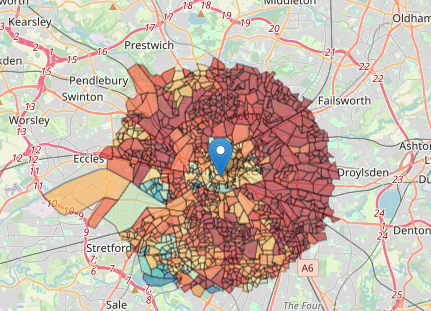Every few years, the government quietly releases one of the most useful datasets in the UK: the Indices of Multiple Deprivation. It is not flashy, but it is gold dust for anyone working in social impact.
The IMD brings together seven domains, from income and employment to education, health, crime, housing and the living environment, to give us a data fingerprint of inequality across England. The new IMD 2025 update matters because, for the first time in six years, we can see how deprivation has changed over time.
Introducing IMD2025.co.uk
We built IMD2025.co.uk to make this data fast and usable for small charities. With it you can:
- Look up any postcode and instantly see its IMD decile.
- Compare 2019 vs 2025 side by side to see where things have improved or worsened.
- Drill into domain detail such as education, health, or employment deprivation.
- Turn complex data into simple insights for decisions and storytelling.
It is free, visual and open. No GIS training, no logins, no jargon.
Why this matters
For most small charities, location is impact. Whether you are tackling loneliness in rural villages, improving youth opportunities in coastal towns, or supporting families in inner cities, place shapes everything.
By checking IMD scores for the areas you serve, you can:
- Strengthen funding bids with hard evidence of need.
- Track whether your work is reaching those who need it most.
- See whether local deprivation is improving, stable, or deepening over time.
- Make better decisions about where to focus next.
A quick example
When we tested the tool using the postcode for Buckingham Palace, it told an interesting story: the Palace sits in one of the least deprived areas in England, but a short walk away the picture shifts. Inequality often hides in plain sight, sometimes just across the street.
Start exploring
Visit IMD2025.co.uk and type in a postcode. The data might confirm what you already know, or it might surprise you. Either way, it gives small charities the same analytical power that large institutions use every day.
Good strategy needs good context. These tools help you target where help is most needed and tell a clearer story about change over time. That is exactly why we built them.
